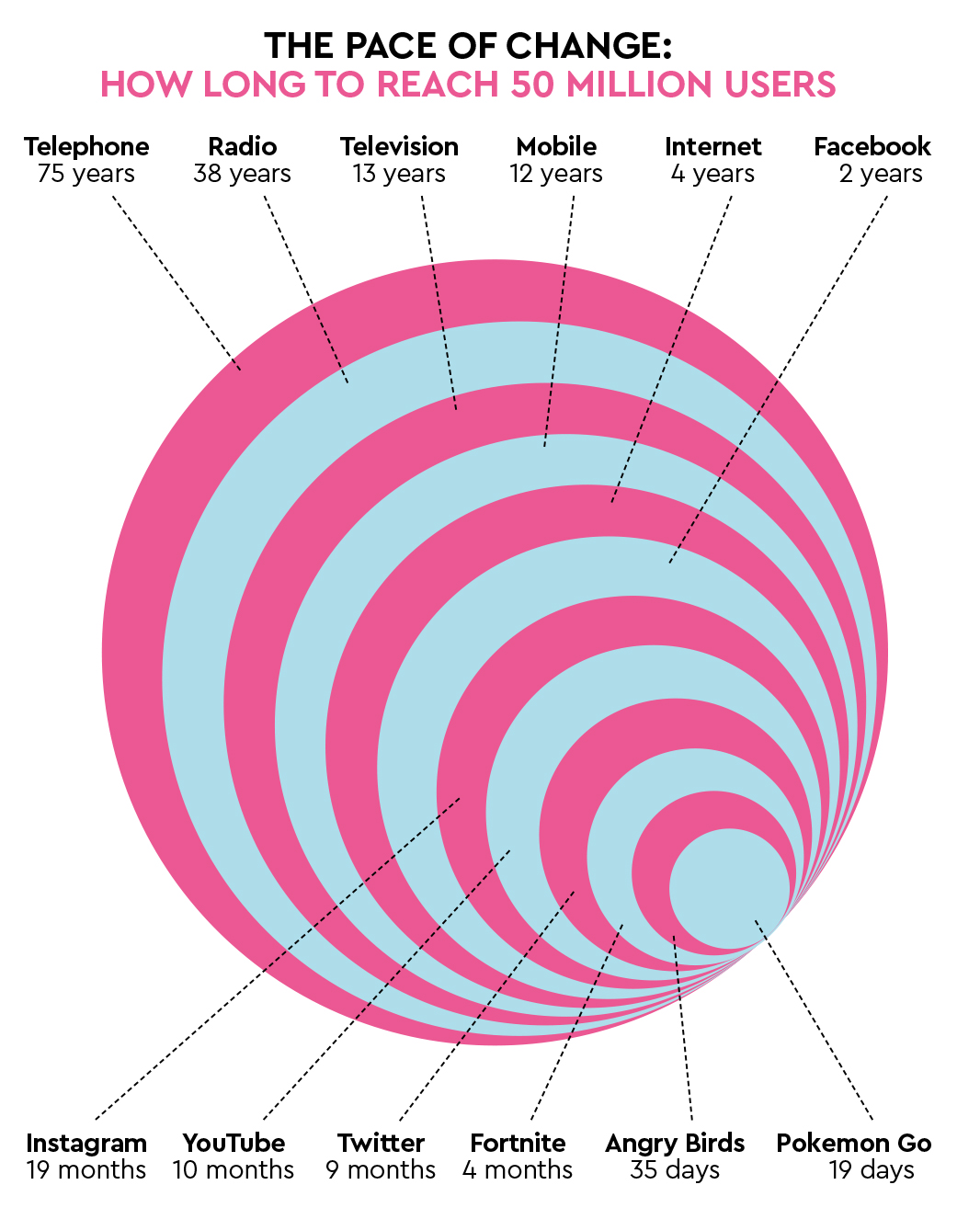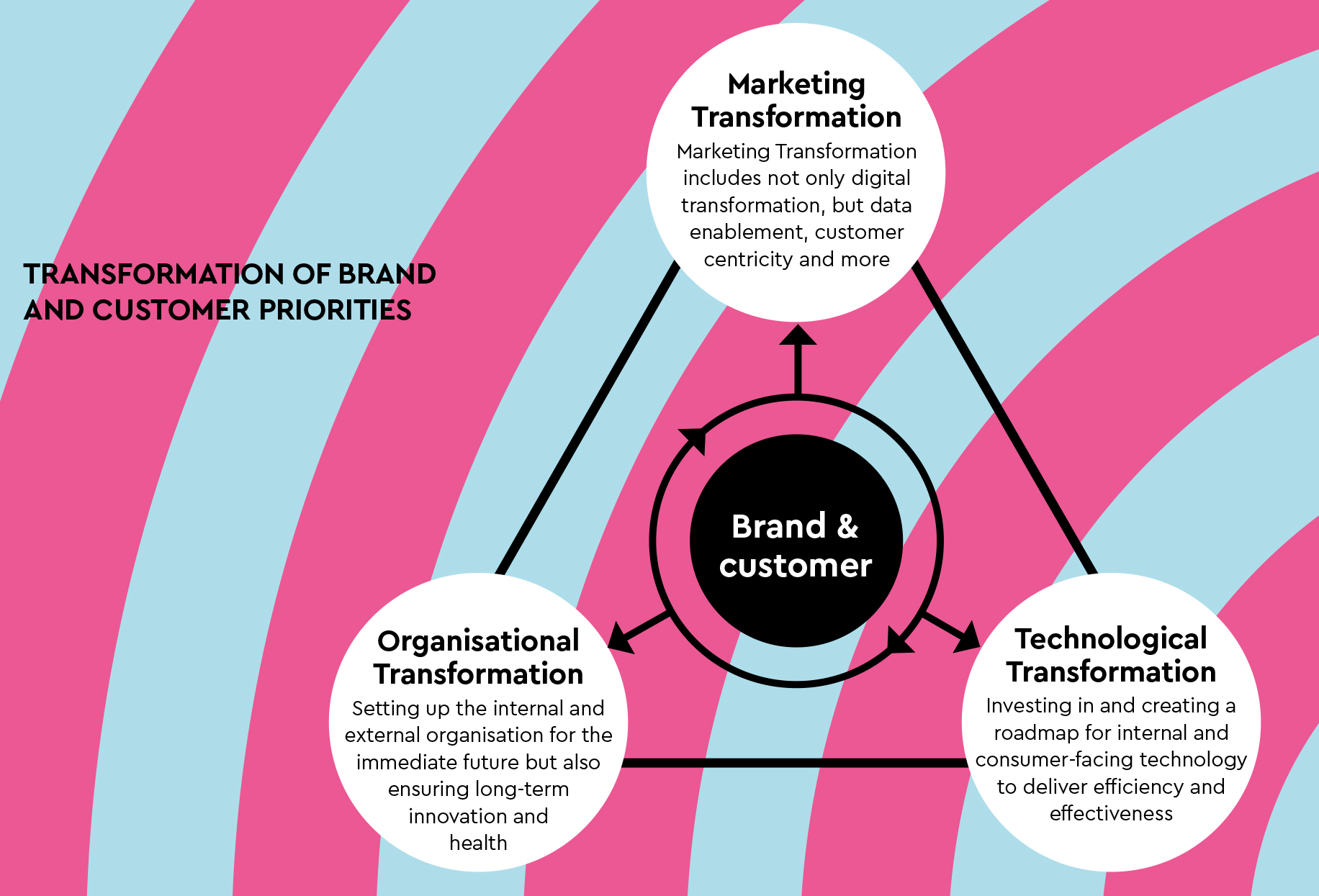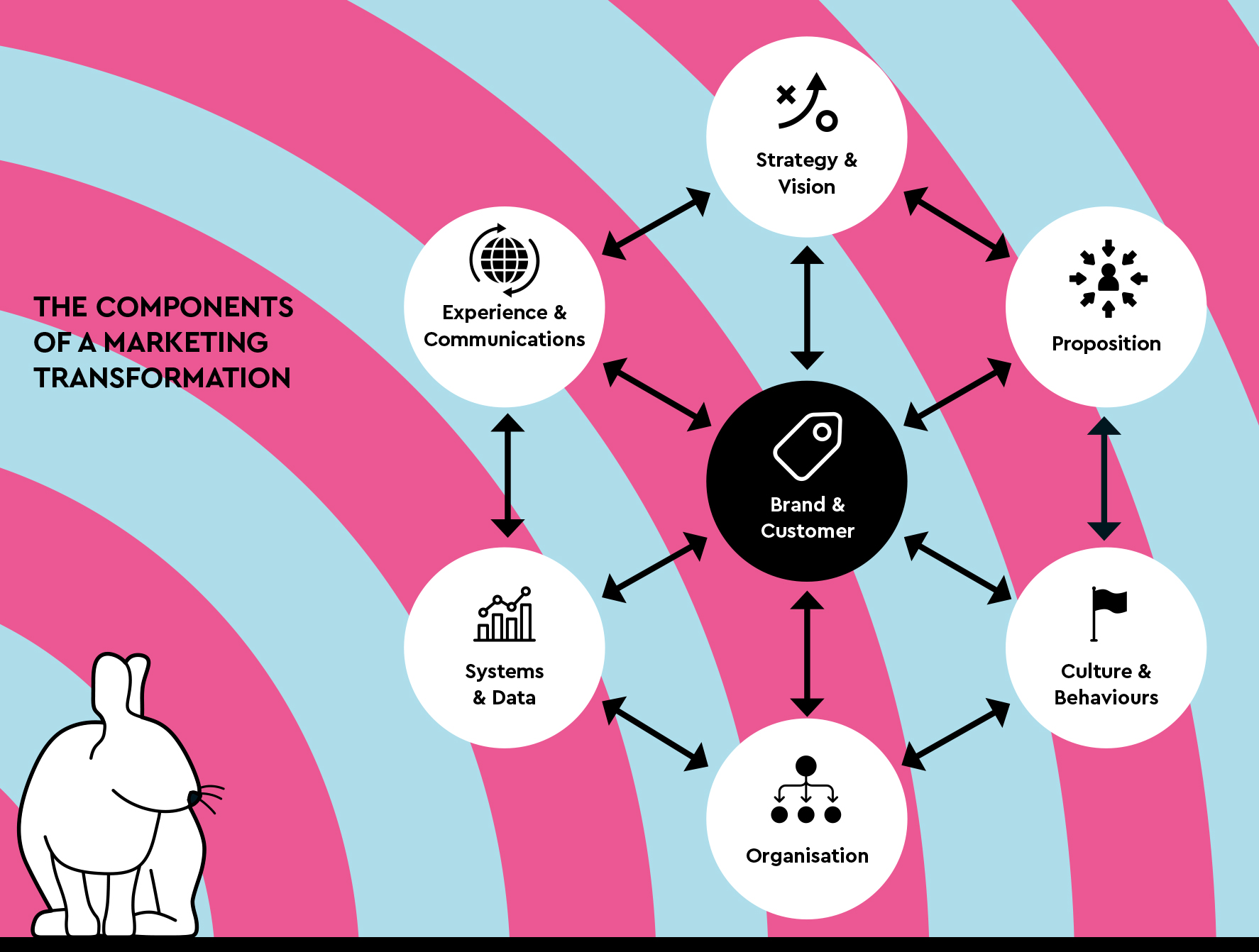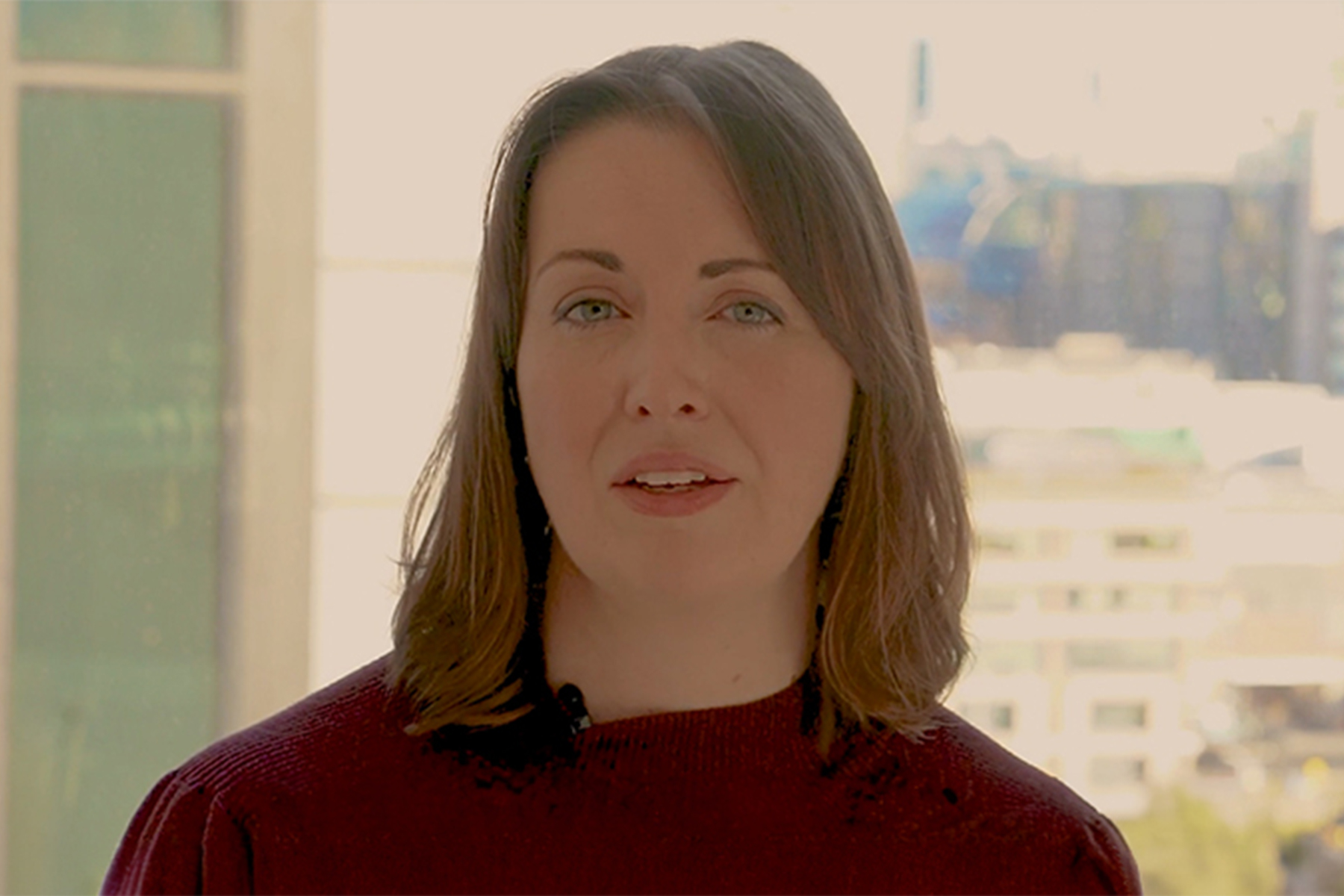
Chief magic officer
As old marketing models struggle with new channels, it's time for enterprise-wide transformation
Many of today's marketing and communications strategies are still modelled on structures developed during the era of fax machines and telephone switchboards. Over the years, new channels have been added and old models applied to them (for example, print models for digital banners or traditional direct mail models for email). It is still relatively rare that marketing strategies and platforms fully integrate modern consumer insights gleaned from advanced data and analytics, modern channels (mobile, social, commerce) and modern business tools such as ad tech and martech, consistently and at scale.
With the writing on the wall for marketers who fail to act, most CMOs believe that they are experiencing some form of marketing transformation.
What are the opportunities?
The need for transformation is irrefutable and the challenge is immense. The CMO’s influence in particular has often been squeezed within organisations as the following factors come into play:
- The CTO impacts core marketing decisions such as the composition of the martech stack
- Lines of business seek innovation and consumer-centric products and propositions
- The CFO demands more performance accountability for emerging and disparate digital activities lacking standardised measurement methodologies
- The Sales team requires direct-to-consumer models and customer insight
- Service becomes inseparable from marketing with the adoption of digital and omni-channel experiences
- HR recognises the benefit of having engaged employees advocating for the brand on multiple channels
However, as these responsibilities have evolved over the past several years, we can see an emerging opportunity for the CMO to be a transformation agent across the business.
In the BrandZTM Top 100 Most Valuable Global Brands report,1 the Top 20 Risers (or the brands that increased most rapidly in value) display three meaningful characteristics. They are:
- Meaningfully different (relevant and distinctive)
- Disruptive (shaking things up)
- Focused on brand experience (the customer journey)
This points to three areas that are squarely in the remit of the CMO: brand, innovation and customer; and it means that marketing can become the glue that connects the broader organisational and technological transformation.
A key opportunity for the CMO lies in championing the kind of enterprise-wide transformation that has the brand and the customer at its heart
Those CMOs on the road to transformation will become galvanising forces for meaningful change. The “super-CMO” will put the customer and brand at the heart of the organisation, inspiring transformation throughout the business.
Forrester recently predicted that “brand promise will spark enterprise-wide transformations”.2 In a world of disruption and change, the stable core of a brand’s purpose and promise has the potential to be the galvanising force for transformation across the business, from the HR function (energising employees to deliver on the brand experience) right through to the IT function (enabling the best customer experiences of the brand through the right technologies). The brand’s core will also ensure a creatively driven and differentiated customer experience.
Successful transformation will be multifaceted, coordinated and continuous. No two businesses will be the same – it will be important to understand the context of external forces (e.g. market, competitive, technological and socio-political) as well as internal ones (e.g. cultural, organisational and brand maturity) before embarking on a roadmap.

Once the business context has been assessed, most (if not all) organisations will structure a marketing transformation roadmap around seven key areas. This starts with the target brand and customer experience and then considers the role of strategy and vision, proposition, culture and behaviours, organisation, systems and data, and, finally, communications (see the illustration on page 9).
Of course, brands and businesses will be at different stages of maturity, and market forces will influence individual priority areas of transformation. However, the following areas are important for all:
Brand and customer
Grounding the marketing transformation in customer-centricity and aligning with the organisation’s brand purpose and promise.
Strategy and vision
Buying into a common transformational purpose and aligning
stakeholders in order to deliver against prioritised plans.
Proposition
Creating a differentiated brand and customer experience that is
customer-centric and architected for future growth.
Culture and behaviours
Identifying marketing transformation as a priority, ensuring all levels
of the business embody a collaborative mindset and take shared
responsibility to drive change across the organisation.
Organisation (people and process)
Building a marketing organisation that is optimised to meet brand
and customer expectations and driven by a coordinated marketing transformation strategy.
Systems and data
Constructing a data-driven and technology enabled business model
with common brand and customer performance metrics.
Experience and communications
Designing an integrated omni-channel ecosystem that supports
customer personalisation at scale, drives meaningful customer
engagement and utilises optimised technology stacks.

Dilemmas: how to navigate five common false choices
In initiating a marketing transformation programme, many new questions will arise, and since every organisation is different, there is no one-size-fits-all approach. When CMOs embark on the transformation journey, they face choices at almost every step. As specific objectives are identified, questions considering “build vs. buy” or “train vs. hire” start to emerge. “When we started down this path, I thought that with the right counsel, developing a vision, strategy and roadmap would be pretty straightforward,” says one client lead. “But one of the first things you learn is that there are many false choices, and it’s almost never a simple question of either/or.” Marketers are increasingly finding that marketing transformation is not a question of either/or, but rather of both/and.
1. Silo or integration?
Functional silos have long been the bane of innovation and progression inside companies. Transformation calls for the breaking of silos such as marketing, sales and technology, or at least reaching across them in order to achieve success. At the same time, never before has such deep specialism been required by CMOs to realise their ambitions, for example in: CRM, digital, change management, brand, data and communications. So, while the question of a more generalist approach to transformation is required at one level, deeper specialisations are required on the other.
2. In-house or outsourced capability?
One of the first elements of a marketing yransformation maturity diagnostic is a survey of existing marketing capabilities across the function. More often than not, capability does not correspond to what’s required in the future-state Target Operating Model.
Clients are focused on faster, better and cheaper, and this typically translates into the need to transform the role of their agency partners as well as build internal capability that they would have previously relied on partners to deliver. At the same time, due to the time it takes to upskill an entire function or the difficulty of hiring for specific functions in market, there is a short-term requirement for third-party assistance. For example, we’ve accompanied several clients who have found that as technology platforms are rolled out globally, significant gaps in the capability to operate them emerge, leaving them underutilised in some markets.
We have also seen clients build out significant content, user experience and design capability in order to have full value-chain control over a direct-to-consumer proposition. Indeed, even the complex world of media offers opportunity to shift operating models as programmatic becomes more intelligent.
3. Centralise or localise?
In traditional marketing communications, there are three main governance models that a CMO can employ, regardless of a company’s size – centralised, hub-and-spoke and local – and there may have been variations on specific models. Today, however, marketing transformation requires a completely new evaluation of operational governance models.
A CMO may decide to implement and enable a global martech stack for economic reasons, but then decide that certain elements are left to individual markets for regulatory (GDPR) or legacy/ capability requirements.

It is not always obvious that marketing transformation is as much about the opportunity for professional development as business growth
In Target Operating Models, where the global CMO is driving marketing transformation from the centre, HQ may be responsible for strategy and a core team of experts, perhaps even providing budget for local implementation. But there is little doubt that on-the-ground resources will be needed to effect the transformation at a market level. Generic models for platforms and Target Operating Models don’t address the complexity of today’s transformation programmes, and a degree of both increased centralisation and localisation will likely be required.
4. Top-down or bottom-up?
The idea of transformation frequently strikes fear or at least a good degree of nervousness into the heart of many businesses. Change is seldom outwardly welcome, as people fear modifications to how their jobs are performed, or worse, the risk of becoming redundant in new models. It is not always obvious to the organisation that marketing transformation is as much about the opportunity for professional development as it is for business growth.
There have been debates about where marketing transformation best sits in an organisation to drive success. Some believe that board and executive-level leadership is required, with high-level visions cascading through the organisation. Others have tried to build pockets of transformation in various areas of the organisation, expecting initiatives to catch on and fan out.
Our clients have at times tried both and eventually realised that neither works on its own. “Trickle-down transformation” is no more effective on its own than “grass-roots transformation”. In the most successful initiatives, vision and continuous support comes from the C-suite, while empowerment permeates the organisation at the behest of nominated transformation champions with boots on the ground. Coordination between these two areas and an ongoing communication platform will help ensure that the vision is understood and embraced top-down, while those looking after the day-to-day requirements for transformation are firmly embedded in the rank and file.
5. Build or buy or partner?
One of the most important advantages that newer companies have over those that are well established is that they can build their businesses on modern technology platforms, for example cloudbased, open-architectured, modular, scalable, interoperable and customisable ones.
Brands in the advanced stages of transformation will typically achieve a 20% increase in revenues along with a 30% decrease in costs
Meanwhile, many of our Fortune 500 clients host technology stacks that have been built over a period of years – or even decades – and they find serious challenges in making them fit for modern purposes. Most companies that are considering a marketing transformation were not built in the cloud and they do not have the luxury of a fresh start where technology is concerned. Consider that the basic replacement of a point-of-sale system, which would enable it to integrate loyalty and purchase data or to operate on tablets rather than tills, can cost upwards of US$50 million (approx. £38.1 million) for just one market.
Many CMOs face a stark reality early in the transformation journey, where they find that current systems are not fit for purpose and there is no option other than to spend tens or hundreds of millions replacing legacy systems. Meanwhile, current IT capabilities are more often directed to “mission-critical” business requirements, leaving the CMO largely unsupported. At the same time, the business is still trying to extract value from a new CRM or ERP system that was bought some years ago on a multi-year contract, but which still hasn’t quite delivered on its initial promise. Without budget to completely refresh the stack, and without the capability available to build everything that’s needed, increasingly CMOs are getting creative about what’s required in order to make transformation work.
A combination of business-case driven requests for new technology can be combined with the continued support of internal IT to build what’s required for the short term. Meanwhile, the growing ecosystem of MarTech partners can be employed for spot solutions that plug temporary holes in tech capability.
In summary
The primary drivers of marketing transformation are operational efficiencies, enhanced customer experience and revenue growth. But it’s important to keep in mind that these choices, like many on the marketing transformation journey, are not mutually exclusive either/or propositions. In fact, brands in advanced stages of transformation typically achieve a 20% increase in revenues along with a 30% decrease in costs, and they demonstrably outperform their category competitors and their stocks.
The opportunities presented by marketing transformation will depend on several factors, and specific opportunities will vary widely across company, brand, category and market. Even where visions exist around future-proofed technology stacks, advanced customer experience and organisational change, there are many pathways that a company might take as it embarks on the marketing transformation journey.
In the experience of our clients, the question of whether or not marketing transformation is a good idea is not up for consideration. Few (if any) of them will say transformation is not important. The question most frequently posed to us is, “What shall we prioritise and how should we begin?”
|
Read more from Atticus Journal Volume 25
This is an excerpt from The CMO and the opportunity of an era 7.4 MB
published on
10 November 2020
Category
More in The Atticus Journal

Generative AI: mitigating risk to unlock opportunity
H+K’s Allison Spray on managing the commercial and reputational risks that the proliferation of generative AI will present

Making sustainability profitable
Sustainability investments must deliver returns – both financial and reputational – to be ‘sustainable’ for business. Something needs to change, says Luc Speisser

Sustainability comms must get real
There’s a disconnect between the way corporations talk about climate change and how the public discusses the same issue. That’s the conclusion of research by Jamie Hamill, Alessia Calcabrini and Alex Kibblewhite.

